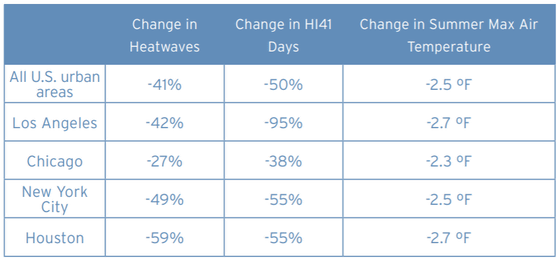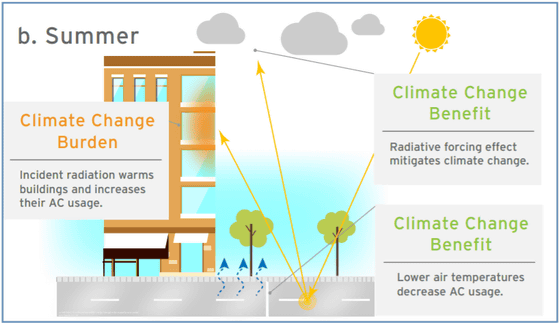Research results show that the maximum temperature drops by more than 1.4 degrees just by changing the 'road color'

Global warming has been an urgent issue since the beginning of the 21st century, but in August 2021, the Intergovernmental Panel on Climate Change (IPCC) said, 'If nothing is done, the world temperature will be 1.5 to 2 during the 21st century. that time to increase '
Mitigating Climate Change with Reflective Pavements
https://cshub.mit.edu/sites/default/files/images/Albedo%201113_0.pdf
Lighter pavement really does cool cities when it's done right
https://theconversation.com/lighter-pavement-really-does-cool-cities-when-its-done-right-162918
In urban areas, about 40% of the land is paved with asphalt, etc., but paved roads absorb sunlight and gradually release heat over time to warm the entire city. The heat emitted from paved roads plays a major role in the heat island phenomenon , and paved roads are the main reason why urban areas are several degrees hotter than suburbs in the summer.
Hessam Azari Jafari and colleagues at the Massachusetts Institute of Technology explain the findings that road color has a significant impact on the heat stored on this paved road. According to Azari Jafari, dark pavement such as asphalt reflects only about 5-10% of the light. On the other hand, when a bright color additive or a surface coating that reflects light is used for pavement, the amount of light reflection can be increased more than three times.
Azari Jafari et al. Calculate that using these 'bright pavements' on all roads in the United States can reduce greenhouse gases equivalent to 4 million cars per year, with a maximum temperature of at least 2.5 degrees Fahrenheit. It will decrease by 1.4 degrees Celsius, and the heat wave will decrease by 41%.

However, in the case of bright pavement, the reflected sunlight may heat up neighboring buildings, so care must be taken when selecting which road to apply bright pavement.

Also, when the sidewalk is paved brightly, the temperature of the sidewalk itself drops by about 11 degrees Fahrenheit (6.1 degrees Celsius), but at a height of about 1 m from the sidewalk, the temperature rises due to the reflected sunlight. , 'Not suitable for sidewalks'.
Despite these caveats, Azari Jafari and colleagues commented, 'Strategic pavement optimization is a wise option to make urban areas more livable.' As for the raw material for bright pavement, he says that using crushed concrete or gravel is also excellent in terms of cost.
Related Posts:
in Note, Posted by darkhorse_log







